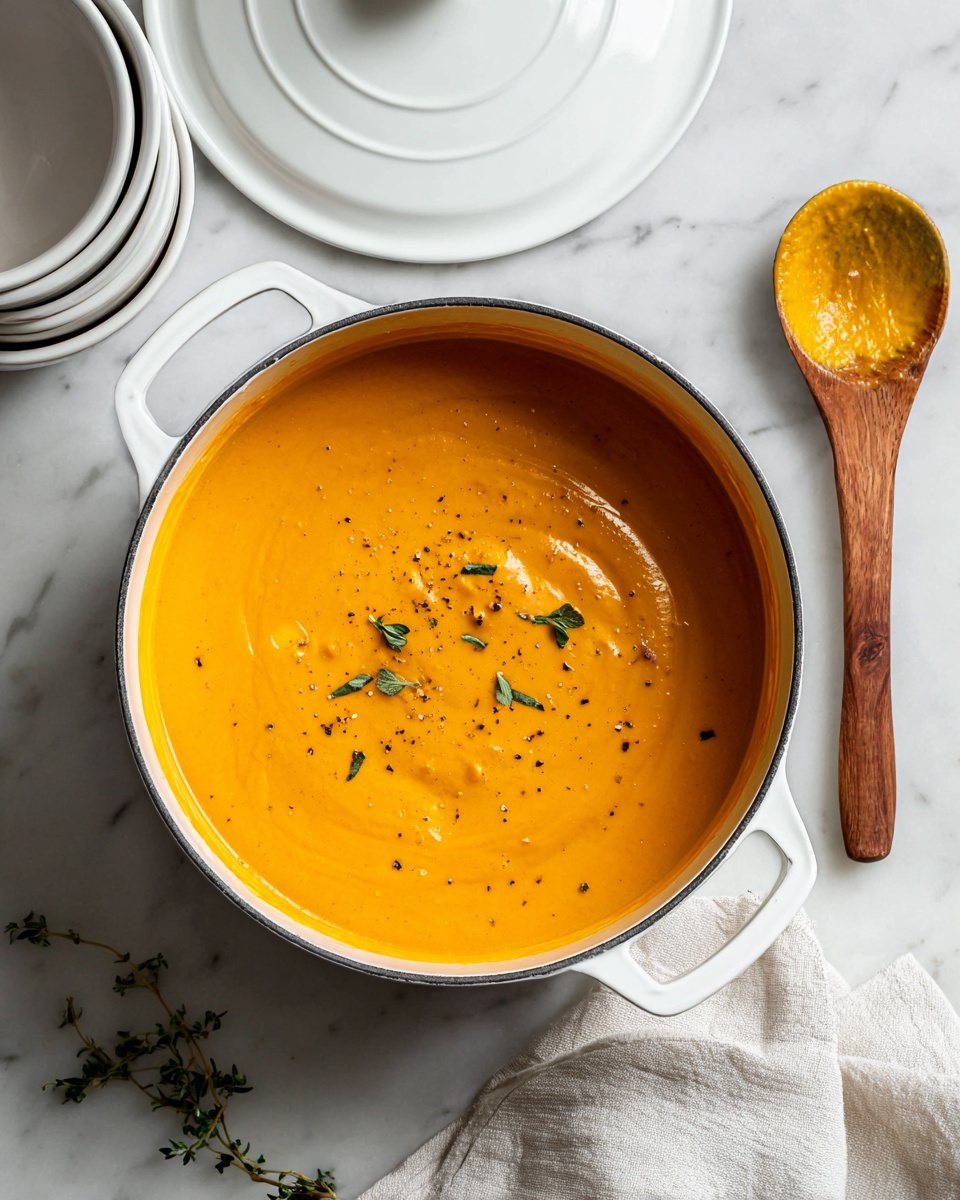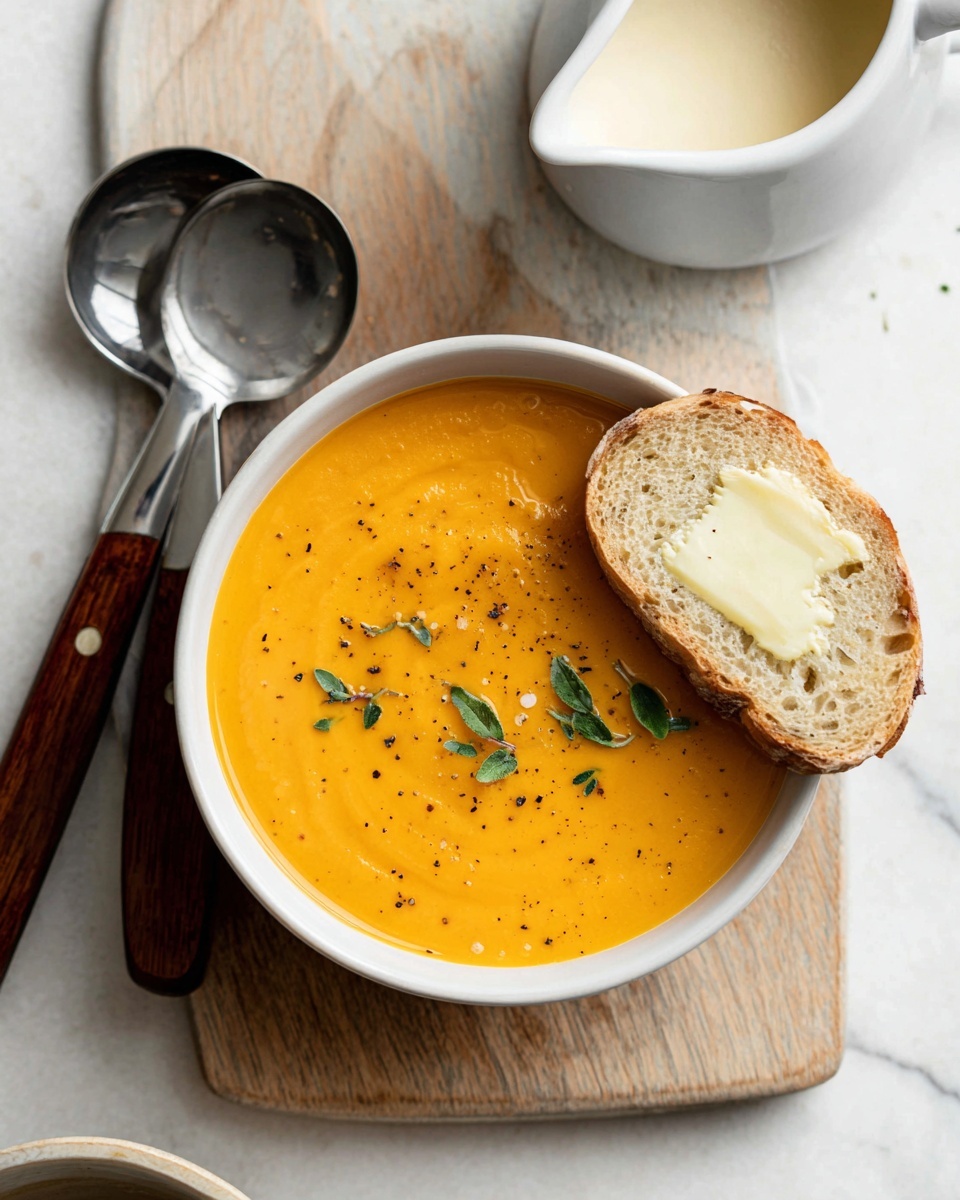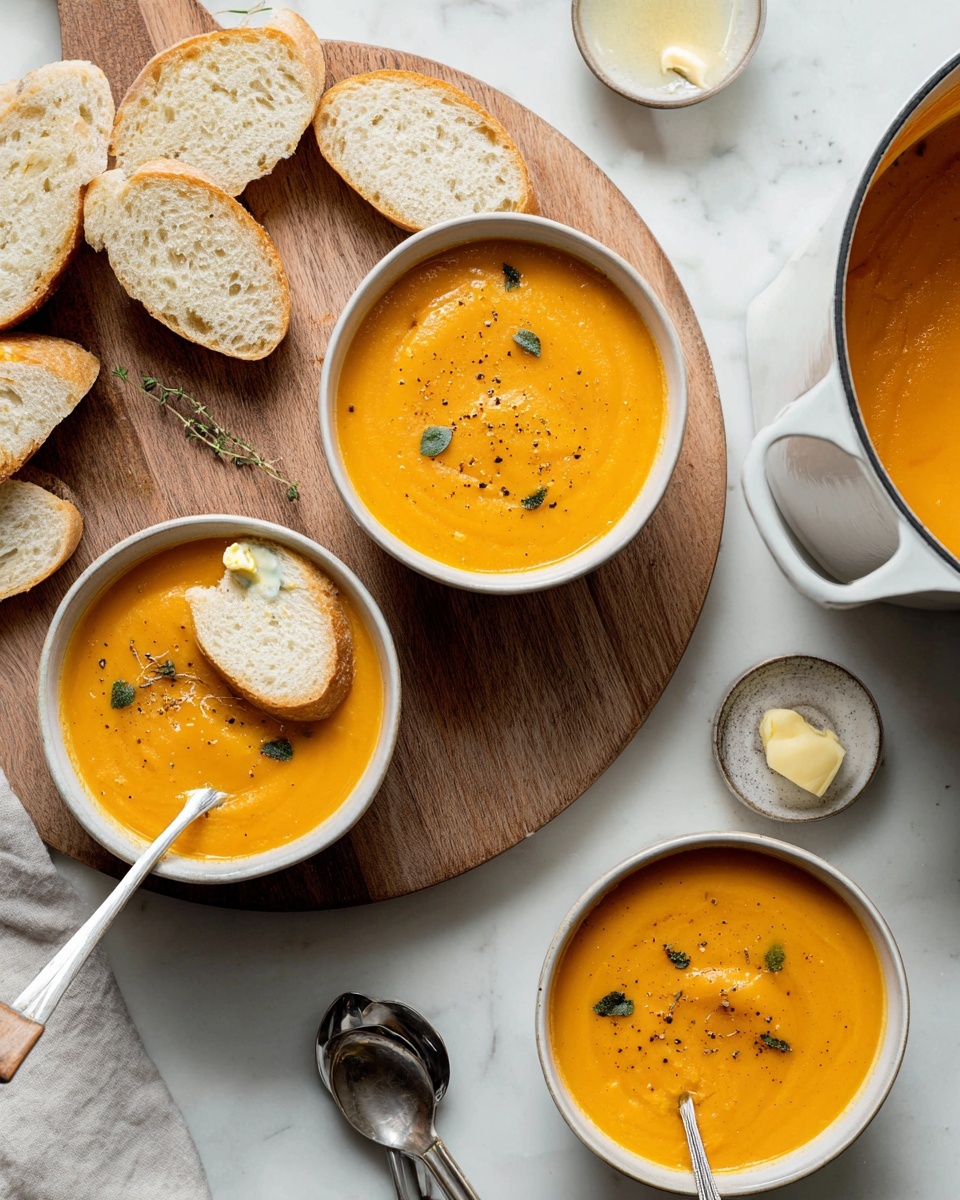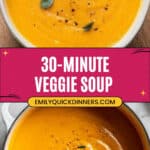If you’ve ever opened your fridge looking at all the odds and ends and thought, “What can I possibly make with all this?,” then this Kitchen Sink Veggie Soup Recipe is your new best friend. It’s a flexible, veggie-packed soup that turns whatever you have on hand into a comforting, satisfying meal. I absolutely love how this soup warms you from the inside out and saves me money by using up leftovers. Stick around, and I’ll show you how to make this fan-freaking-tastic soup that my family goes crazy for!
Why You’ll Love This Recipe
- Super Flexible: You can toss in almost any veggies you have, making it perfect for reducing food waste.
- Quick and Easy: Ready in just about 30 minutes—a lifesaver on busy weeknights.
- Comforting and Nutritious: Hearty veggies and broth nourish your body and soul.
- Kid and Family Friendly: I’ve found even picky eaters enjoy it when blended smooth and served warm.
Ingredients You’ll Need
For the Kitchen Sink Veggie Soup Recipe, the magic lies in the variety of veggies working together to create layers of flavor. The key is a mix of aromatic, root, and hearty vegetables. When shopping, pick veggies that are fresh and vibrant, but don’t stress if you swap in what you already have.
- Olive Oil: Adds a subtle richness and helps soften the vegetables; don’t skip this step for sautéing.
- Onion: The foundation of flavor; yellow or white onions work great.
- Cauliflower: Adds texture and mild sweetness; I like cutting it into small florets for even cooking.
- Fennel Bulb: Brings a lovely anise-like flavor that complements the soup’s earthiness.
- Carrots: Sweetness and color – peeled and diced evenly for consistent cooking.
- Tomato: Adds a bright acidity; fresh diced tomato works best, but canned can be a backup.
- Yukon Gold Potatoes: They break down slightly and help thicken the soup while adding creaminess.
- Salt & Pepper: Essential for seasoning, added gradually to make sure flavors balance well.
- Garlic Powder: A handy shortcut for garlic flavor without chopping fresh cloves.
- Dried Thyme: Or fresh herbs if you prefer; thyme adds a subtle earthy herbal note.
- Red Pepper Flakes (optional): For a gentle kick if you’re in the mood for a little heat.
- Low-Sodium Chicken Stock (or Veggie Broth): The liquid base that brings everything together with a savory depth.
Variations
I love how open-ended the Kitchen Sink Veggie Soup Recipe is, so I encourage you to make it your own. Sometimes I’ll sneak in kale or spinach at the end for a green boost, and other times I swap the fennel for celery depending on what’s left in the crisper. Feel free to experiment!
- Make it Vegan: Use vegetable broth instead of chicken stock, and skip any animal-based additions if you want a plant-based meal. I’ve done this often, and it tastes just as hearty!
- Add Protein: Stir in cooked beans, lentils, or shredded chicken after blending for a heartier bowl.
- Spice it Up: Double the red pepper flakes or add smoked paprika for a smoky twist that I personally find irresistible.
- Chunky vs. Smooth: Blend it all or leave some veggie chunks—it’s your call and your comfort level. Sometimes I do half and half!
How to Make Kitchen Sink Veggie Soup Recipe
Step 1: Sauté the Veggies to Build Flavor
Begin by heating your pot over medium-high heat and adding the olive oil. Then toss in all the chopped veggies except for the broth—onion, cauliflower, fennel, carrots, tomato, and potatoes—along with your salt, pepper, garlic powder, thyme, and red pepper flakes if you’re using them. Stir occasionally and cook for about 7–10 minutes until everything starts to soften and you get that wonderful scent filling your kitchen. This step is where the flavors really start to develop and it’s one of the reasons the soup tastes so rich and hearty.
Step 2: Add Broth and Simmer
Pour in about 6 cups of your low-sodium chicken stock or veggie broth and bring the mixture to a boil. Once bubbling, reduce the heat to medium-low and let the soup simmer gently for 15–20 minutes. You want the veggies to become tender and meld with the broth. I usually start tasting around the 15-minute mark to see if the potatoes and carrots are soft enough—feel free to adjust the simmer time a bit to fit your preferred texture.
Step 3: Blend to Your Desired Consistency
This step is where the soup takes shape. You can use an immersion blender right in the pot to purée everything until smooth or leave a few veggie chunks for texture if that’s how you roll. No immersion blender? No problem — carefully transfer the soup in batches to a regular blender. If the soup feels too thick after blending, simply stir in a little more broth until it’s just right. Before serving, adjust the seasoning with a bit more salt and pepper if needed. I’ve found this blending step turns simple ingredients into something extraordinary every time.
Pro Tips for Making Kitchen Sink Veggie Soup Recipe
- Vegetable Size Uniformity: Chop veggies into similar sizes for even cooking and better texture.
- Broth First: I learned adding the broth after the veggies soften keeps flavors bright rather than watery.
- Blending in Batches: When using a regular blender, fill it halfway max to avoid overflow and hot splashes.
- Adjust Seasonings at the End: Soup flavors intensify after resting, so taste and tweak seasoning just before serving.
How to Serve Kitchen Sink Veggie Soup Recipe

Garnishes
I like topping my Kitchen Sink Veggie Soup with a dollop of sour cream or plain Greek yogurt—it adds creaminess without overpowering the veggie flavors. Fresh herbs like parsley or chives bring a lovely fresh note too. When I want a little crunch, I throw on some toasted pumpkin seeds or a sprinkle of shredded cheddar cheese, which my family absolutely adores.
Side Dishes
This soup pairs beautifully with crusty bread—preferably warm and toasted with garlic butter. I often serve it alongside a simple side salad or even grilled cheese sandwiches for a cozy, satisfying meal.
Creative Ways to Present
For special occasions or when guests come over, I like serving the soup in small cups or mason jars as a starter. Sprinkling a little smoked paprika or a swirl of chili oil on top makes it look fancy without much extra effort. You can even add a cheese crisp on the side for an elegant touch that’s always a hit.
Make Ahead and Storage
Storing Leftovers
I store leftover Kitchen Sink Veggie Soup in airtight containers in the fridge, and it keeps well for about 3-4 days. The flavors often deepen overnight, making leftovers even more delicious. Just give it a good stir before reheating.
Freezing
This soup freezes beautifully! I like to portion it out in freezer-safe containers or heavy-duty freezer bags. When thawed, it retains its fresh veggie flavor and texture wonderfully. Just remember to leave space at the top of containers to allow for expansion.
Reheating
Reheat gently on the stovetop over medium heat, stirring occasionally. If it thickened in the fridge or freezer, just add a splash of broth or water to loosen it back up. I usually avoid the microwave for reheating because this soup is so quick to warm on the stove.
FAQs
-
Can I make the Kitchen Sink Veggie Soup Recipe in a slow cooker?
Absolutely! Just toss all the veggies, seasonings, and broth into the slow cooker on low for 6-8 hours or on high for 3-4 hours until veggies are very tender. Then blend with an immersion blender or in batches to your desired consistency.
-
What can I substitute for fennel if I don’t have any?
If you don’t have fennel, celery is a great substitute that adds a similar mild crunch and fresh flavor. I’ve swapped it many times without anyone noticing a difference!
-
Is this soup gluten-free?
Yes! This recipe is naturally gluten-free as long as you use a gluten-free broth. It’s a great option if you’re cooking for guests with dietary restrictions.
-
Can I add pasta or grains to the Kitchen Sink Veggie Soup Recipe?
You can definitely add cooked pasta, rice, or quinoa towards the end of cooking for extra heartiness. Just stir them in once the soup is done cooking and warm through to prevent overcooking and sogginess.
Final Thoughts
This Kitchen Sink Veggie Soup Recipe holds a special place in my kitchen because it reminds me that great meals don’t have to be complicated or fancy—they just need some love and a little creativity. Whenever life feels hectic or the fridge looks bare, this soup saves the day with its comforting flavors and nourishing ingredients. I hope you enjoy making and eating it as much as I do; it’s like a warm hug in a bowl, perfect for sharing with family or keeping all to yourself on a cozy day. Give it a try and see how many different veggie combos you can dream up!
Print
Kitchen Sink Veggie Soup Recipe
- Prep Time: 10 minutes
- Cook Time: 20 minutes
- Total Time: 30 minutes
- Yield: 4 to 6 servings 1x
- Category: Soup
- Method: Stovetop
- Cuisine: American
- Diet: Low Fat
Description
Kitchen Sink Veggie Soup is a hearty, nutritious, and versatile soup packed with a variety of vegetables like cauliflower, fennel, carrots, potatoes, onion, and tomato. It’s cooked gently on the stovetop before being blended to a smooth or chunky texture based on preference. This comforting soup makes excellent use of whatever vegetables you have on hand and is perfect for a quick, warming meal.
Ingredients
Vegetables
- 1 onion, chopped
- 1 head cauliflower, cut into florets
- 1 fennel bulb, diced
- 4 large carrots, peeled and diced
- 1 large tomato, diced
- 2 medium Yukon gold potatoes, diced
Seasonings & Oil
- 2 tablespoons olive oil
- 2 teaspoons salt, plus more to taste
- 1/2 teaspoon pepper
- 2 teaspoons garlic powder
- 1 teaspoon dried thyme (or 2 teaspoons fresh herbs)
- 1/4 teaspoon red pepper flakes (optional)
Liquids
- 6–8 cups low-sodium chicken stock (or vegetable broth for vegetarian version)
Instructions
- Preheat and Sauté Vegetables: Preheat a large pot over medium to high heat. Add olive oil and then all the chopped vegetables and seasonings except the broth. Cook, stirring occasionally, for 7-10 minutes until the vegetables begin to soften and release their flavors.
- Add Broth and Simmer: Pour in 6 cups of the low-sodium chicken stock or vegetable broth. Bring the mixture to a boil, then reduce heat to medium-low to maintain a gentle simmer. Let cook for 15-20 minutes until all the vegetables are tender and cooked through.
- Blend the Soup: Remove the pot from heat. Using an immersion blender, blend the soup to your desired consistency—either fully smooth or leaving some chunks. Alternatively, transfer in batches to a regular blender. If the soup is too thick, add more broth to reach your preferred texture.
- Adjust Seasoning and Serve: Taste and add extra salt and pepper if needed. Serve the soup hot and enjoy a warming, wholesome meal.
Notes
- This soup is highly versatile; feel free to swap or add any vegetables you have on hand to make it your own.
- Using low-sodium broth helps control the salt content, so season gradually and to taste.
- If you prefer a chunkier soup, blend only part of the soup or pulse briefly with the blender.
- Leftovers keep well in the refrigerator for up to 4 days and also freeze nicely for future meals.
Nutrition
- Serving Size: 1 cup (approximately)
- Calories: 110 kcal
- Sugar: 5 g
- Sodium: 300 mg
- Fat: 4 g
- Saturated Fat: 0.5 g
- Unsaturated Fat: 3 g
- Trans Fat: 0 g
- Carbohydrates: 18 g
- Fiber: 4 g
- Protein: 3 g
- Cholesterol: 0 mg



